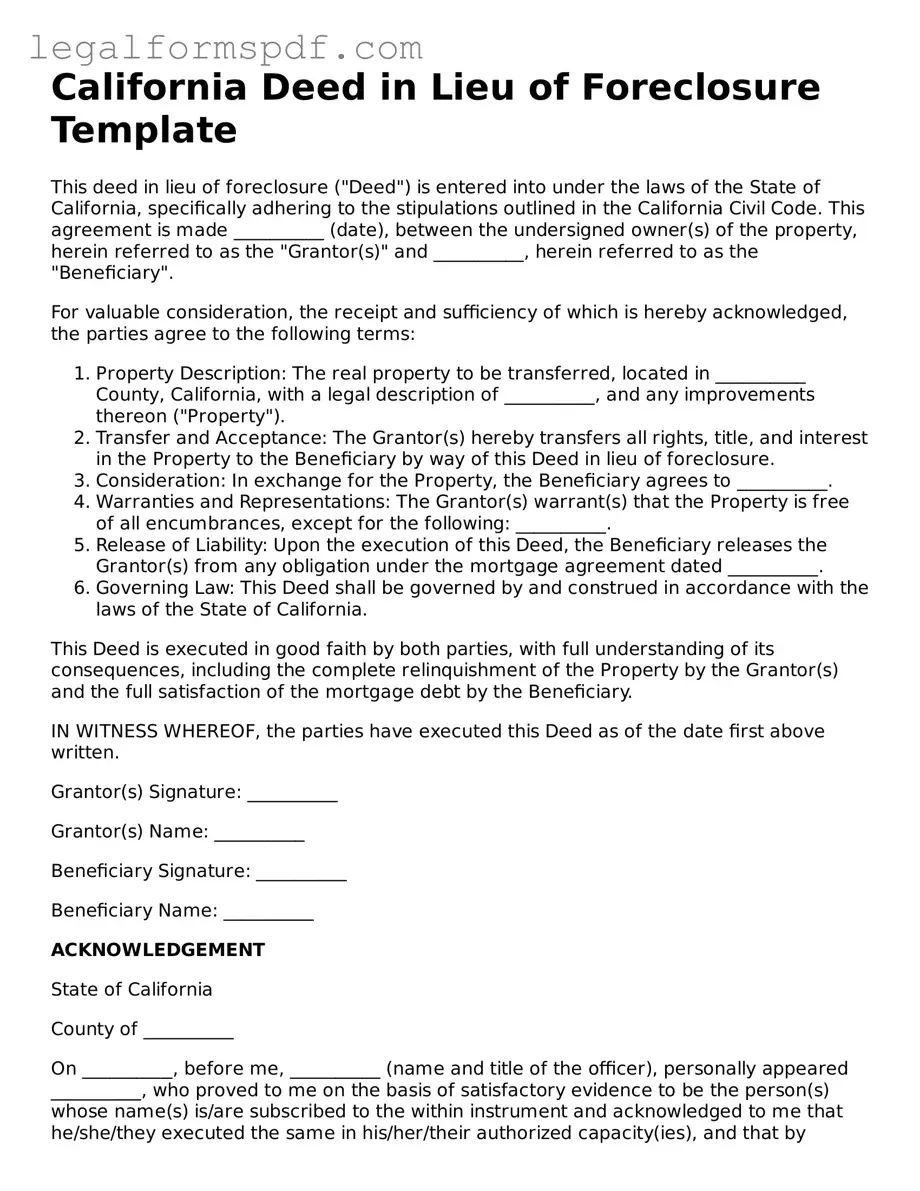California Deed in Lieu of Foreclosure Template
This deed in lieu of foreclosure ("Deed") is entered into under the laws of the State of California, specifically adhering to the stipulations outlined in the California Civil Code. This agreement is made __________ (date), between the undersigned owner(s) of the property, herein referred to as the "Grantor(s)" and __________, herein referred to as the "Beneficiary".
For valuable consideration, the receipt and sufficiency of which is hereby acknowledged, the parties agree to the following terms:
- Property Description: The real property to be transferred, located in __________ County, California, with a legal description of __________, and any improvements thereon ("Property").
- Transfer and Acceptance: The Grantor(s) hereby transfers all rights, title, and interest in the Property to the Beneficiary by way of this Deed in lieu of foreclosure.
- Consideration: In exchange for the Property, the Beneficiary agrees to __________.
- Warranties and Representations: The Grantor(s) warrant(s) that the Property is free of all encumbrances, except for the following: __________.
- Release of Liability: Upon the execution of this Deed, the Beneficiary releases the Grantor(s) from any obligation under the mortgage agreement dated __________.
- Governing Law: This Deed shall be governed by and construed in accordance with the laws of the State of California.
This Deed is executed in good faith by both parties, with full understanding of its consequences, including the complete relinquishment of the Property by the Grantor(s) and the full satisfaction of the mortgage debt by the Beneficiary.
IN WITNESS WHEREOF, the parties have executed this Deed as of the date first above written.
Grantor(s) Signature: __________
Grantor(s) Name: __________
Beneficiary Signature: __________
Beneficiary Name: __________
ACKNOWLEDGEMENT
State of California
County of __________
On __________, before me, __________ (name and title of the officer), personally appeared __________, who proved to me on the basis of satisfactory evidence to be the person(s) whose name(s) is/are subscribed to the within instrument and acknowledged to me that he/she/they executed the same in his/her/their authorized capacity(ies), and that by his/her/their signature(s) on the instrument, the person(s), or the entity upon behalf of which the person(s) acted, executed the instrument.
WITNESS my hand and official seal.
Signature of Notary: __________
Seal:
